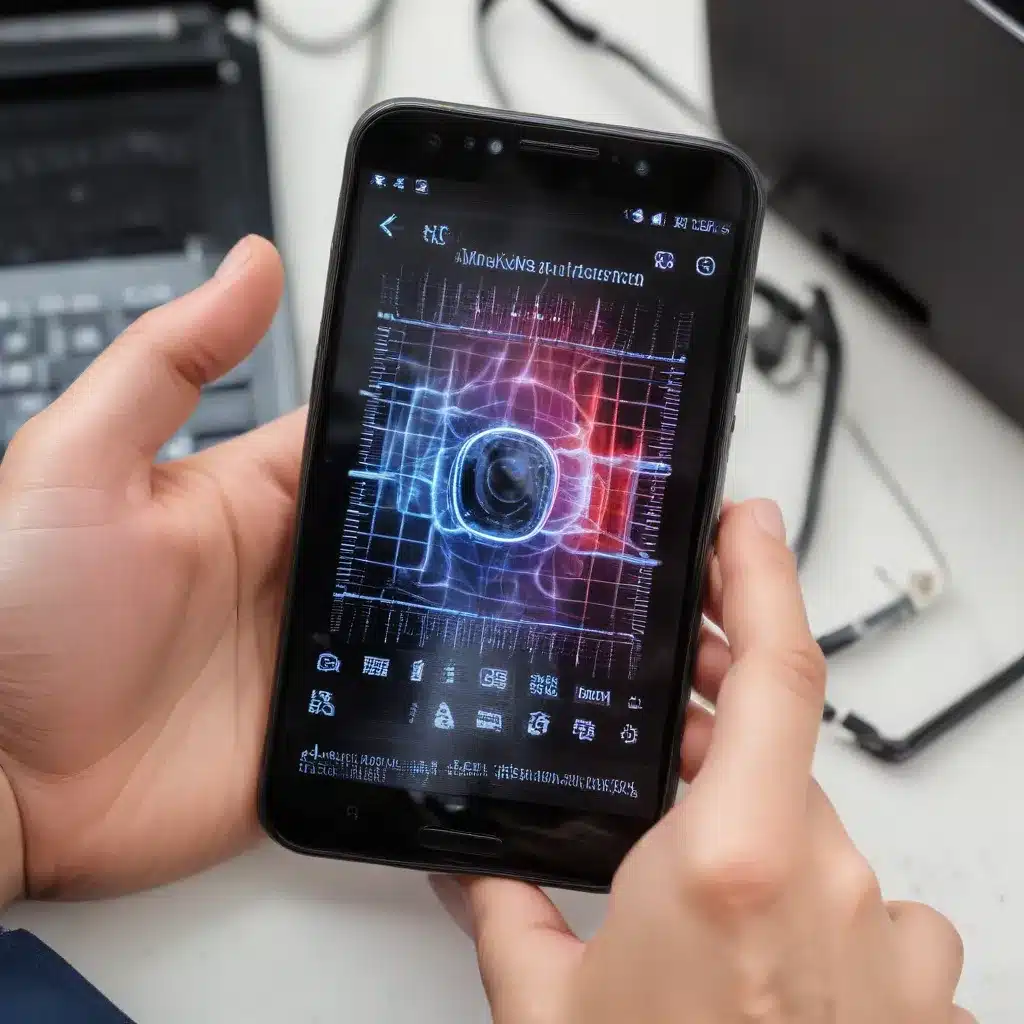
As a seasoned IT professional, I’ve encountered my fair share of smartphone overheating problems. In today’s world of high-powered, feature-rich mobile devices, it’s not uncommon for users to experience their devices running uncomfortably hot, leading to performance issues, battery drain, and even the dreaded shutdown.
In this comprehensive guide, I’ll walk you through the common causes of smartphone overheating and provide practical solutions to help you keep your device running cool and optimized, no matter how demanding your usage may be.
Identifying the Signs of Overheating
Before we dive into troubleshooting, it’s important to recognize the telltale signs that your smartphone is overheating. These may include:
- Noticeable warmth or heat: If your device feels significantly warmer than usual, especially in the back or around the processor, this could indicate an overheating issue.
- Reduced performance: Sluggish app launches, frame rate drops, or overall lag can be signs that your device is throttling performance to manage the heat.
- Automatic shutdowns: In extreme cases, your smartphone may automatically shut down to prevent damage from excessive heat.
- Battery drain: Overheating can cause your battery to drain much faster than normal, as the device struggles to manage the thermal load.
- Charging interruptions: Some smartphones will pause charging when the device reaches a certain temperature to prevent further heat buildup.
It’s important to note that a certain level of warmth is normal, especially during intensive tasks like gaming, video streaming, or extended camera use. However, if the heat becomes uncomfortable to hold or interferes with the device’s normal operation, it’s time to investigate further.
Diagnosing the Underlying Causes
Smartphone overheating can be caused by a variety of factors, and understanding the root cause is key to finding the right solution. Let’s explore some of the most common culprits:
1. Intensive App Usage
Certain apps, particularly those that are resource-intensive, can put a significant strain on your smartphone’s processor and generate excessive heat. This is often the case with graphically demanding games, augmented reality apps, video editing software, and even extended video calls or conferencing.
2. Environmental Factors
The ambient temperature of your surroundings can also play a role in smartphone overheating. Using your device in direct sunlight, hot weather, or confined spaces with poor airflow can prevent proper heat dissipation, leading to overheating issues.
3. Software Issues
Poorly optimized software updates, rogue background processes, or even malware can contribute to overheating problems. In some cases, users have reported experiencing increased heat and performance issues after updating their devices to the latest version of the operating system.
4. Hardware Malfunctions
In rare cases, hardware-related problems, such as a faulty battery, cooling system, or even a damaged processor, can lead to persistent overheating. This is more common in older devices or those that have experienced physical damage.
Implementing Effective Cooling Solutions
Now that we’ve identified the potential causes of smartphone overheating, let’s explore some practical solutions to keep your device running cool and optimized:
1. Manage App Usage
Be mindful of the apps you’re using and the tasks you’re performing on your smartphone. Try to limit the use of resource-intensive apps, especially during prolonged sessions. Consider taking breaks or switching to less demanding activities to allow your device to cool down.
2. Optimize Device Settings
Adjusting your smartphone’s settings can help mitigate overheating issues. Look for options to:
– Reduce screen brightness and disable features like always-on display or 120Hz refresh rates.
– Limit background app activity and close unused apps.
– Disable location services, Bluetooth, and Wi-Fi when not in use.
3. Improve Airflow and Cooling
Ensure your smartphone has adequate airflow and cooling. Avoid using your device in confined spaces or direct sunlight, and consider investing in a cooling case or stand that can help dissipate heat more effectively.
4. Monitor Device Temperature
Many smartphones now come equipped with built-in temperature monitoring features. Use these to track your device’s temperature and identify any concerning spikes or patterns. Some apps, such as IT Fix, even offer advanced temperature monitoring and optimization tools to help you stay on top of overheating issues.
5. Perform Regular Maintenance
Regularly cleaning your smartphone’s vents and cooling components can help improve airflow and prevent dust buildup, which can contribute to overheating. Additionally, consider factory resetting your device or performing a clean installation of the operating system if software issues are suspected.
6. Seek Professional Assistance
If the above solutions don’t resolve your smartphone’s overheating problems, it may be time to seek professional assistance. Contact the device manufacturer or a trusted IT repair service to have your device inspected and potentially repaired or replaced if a hardware fault is detected.
Preventing Future Overheating Incidents
To avoid the frustration of recurrent overheating issues, consider implementing the following proactive measures:
-
Keep Your Software Up to Date: Regularly update your smartphone’s operating system and apps to ensure you’re benefiting from the latest performance optimizations and bug fixes.
-
Avoid Excessive Heat Exposure: Be mindful of your smartphone’s environment and avoid prolonged use in direct sunlight, hot vehicles, or other high-temperature settings.
-
Utilize Cooling Accessories: Invest in a high-quality cooling case, stand, or external fan to help dissipate heat and maintain optimal device performance.
-
Monitor Battery Health: A degraded or faulty battery can contribute to overheating issues. Regularly check your battery’s health and consider replacement if necessary.
-
Provide Adequate Ventilation: Ensure your smartphone has sufficient airflow and avoid using it in enclosed spaces or while covered by fabrics or other materials.
By proactively addressing the root causes of smartphone overheating and implementing the right cooling solutions, you can keep your high-performance device running at its best, regardless of your usage patterns or environmental conditions.
Remember, your smartphone is a significant investment, and taking the time to properly diagnose and resolve overheating issues can extend its lifespan and ensure a seamless, comfortable user experience. For more IT-related tips and insights, be sure to visit the IT Fix blog.












